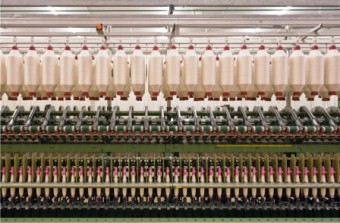Textile spinning mills affiliated to the Northern India Textile Mills' Association (NITMA) are considering cutting back production and shutting down their mills once a week against the current trend of operating a mill 24x7.

In a press release, NITMA said the decision to take this step has come in the wake of domestic excess spinning capacity in the country and poor demand for yarn from overseas markets leading to accumulation of yarn stocks and poor liquidity.
Sharad Jaipuria, president of NITMA said, “States like Madhya Pradesh, Gujarat, Maharashtra, Rajasthan, Andhra Pradesh and Telengana are attracting new investments in spinning due to their new textile policy, which is loaded with incentives and sops and thereby adding more than required capacity in the country. Tamil Nadu too is going to announce a new textile policy soon.”
“On the other hand, China which was a major importer of Indian yarns for the past few years, has cut-down imports in the past few months, thus worsening the situation, leading to accumulation of yarn stocks in Indian spinning mills,” Jaipuria observed.
H.S Cheema, senior vice president, NITMA stated, "The spinning industry is under crisis and the situation is moving from bad to worse and spinners are making losses. We are therefore considering various options to reduce our daily production, including closing the plant for one day in a week.”
Additionally, to add to the woes of the textile mills, TUFS reimbursements are pending for cleared cases from the July-September 2014 quarter. The government has also reduced allocation for TUFS from Rs 1,864 crore to Rs 1,520 crore in the 2015-16 budget.
The NITMA also blamed the Cotton Corporation of India (CCI) partly for its woes. It said that while CCI sells to Central, Western and Southern India, from their godowns in the respective regions, spinning mills in Northern India have to pay higher cotton transportation charges than their counterparts in these regions. This has also added to the cost of running textile mills in Northern India.





